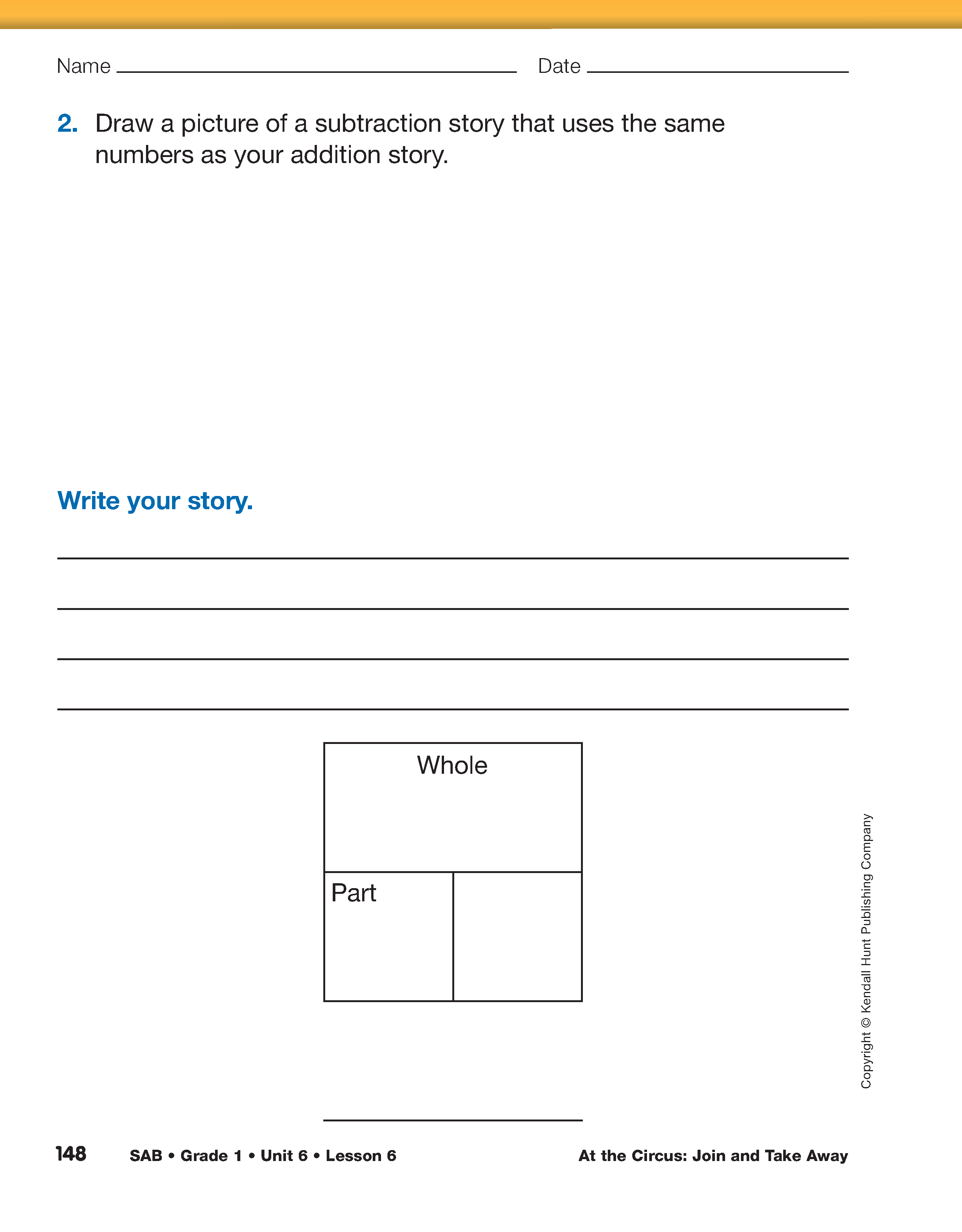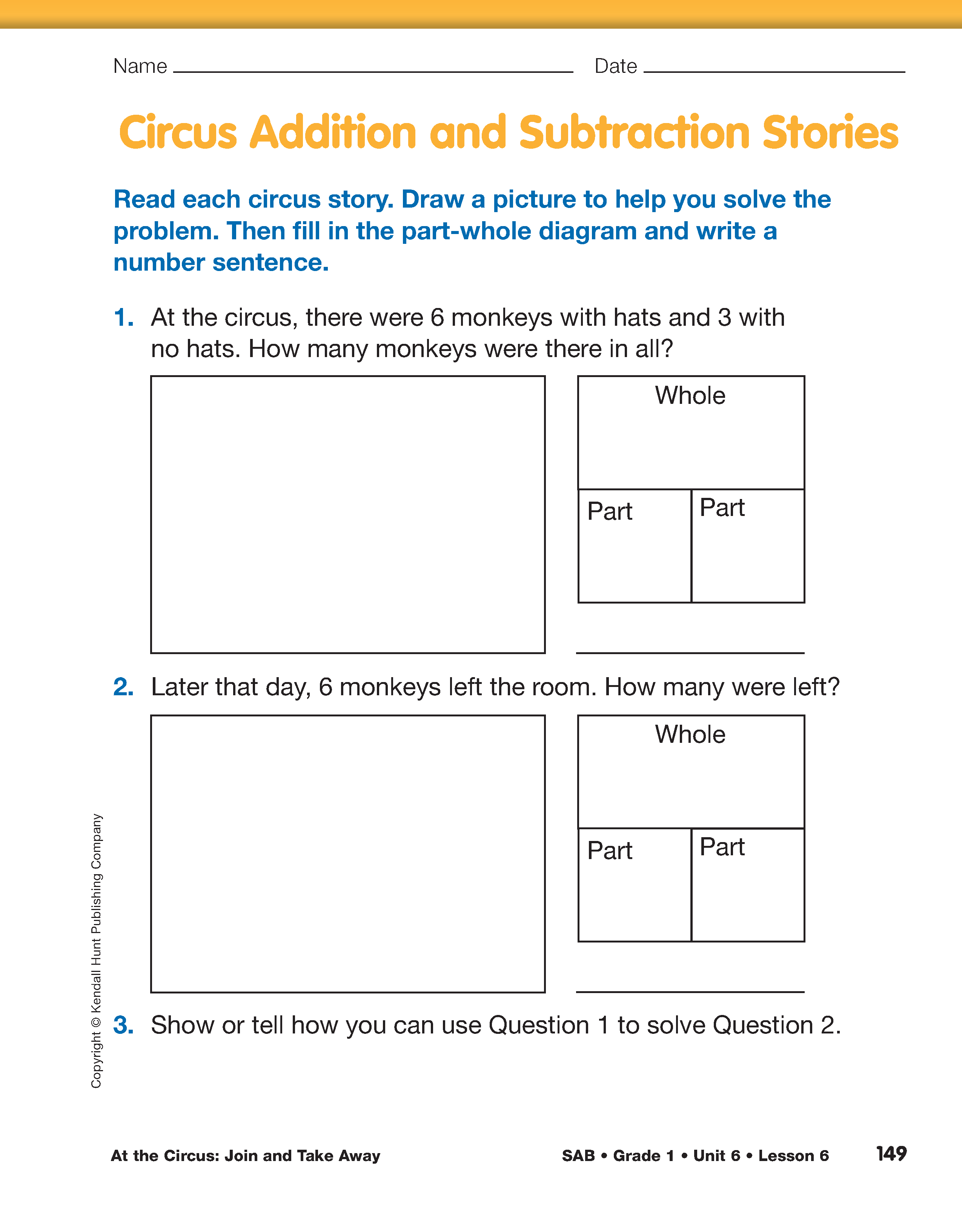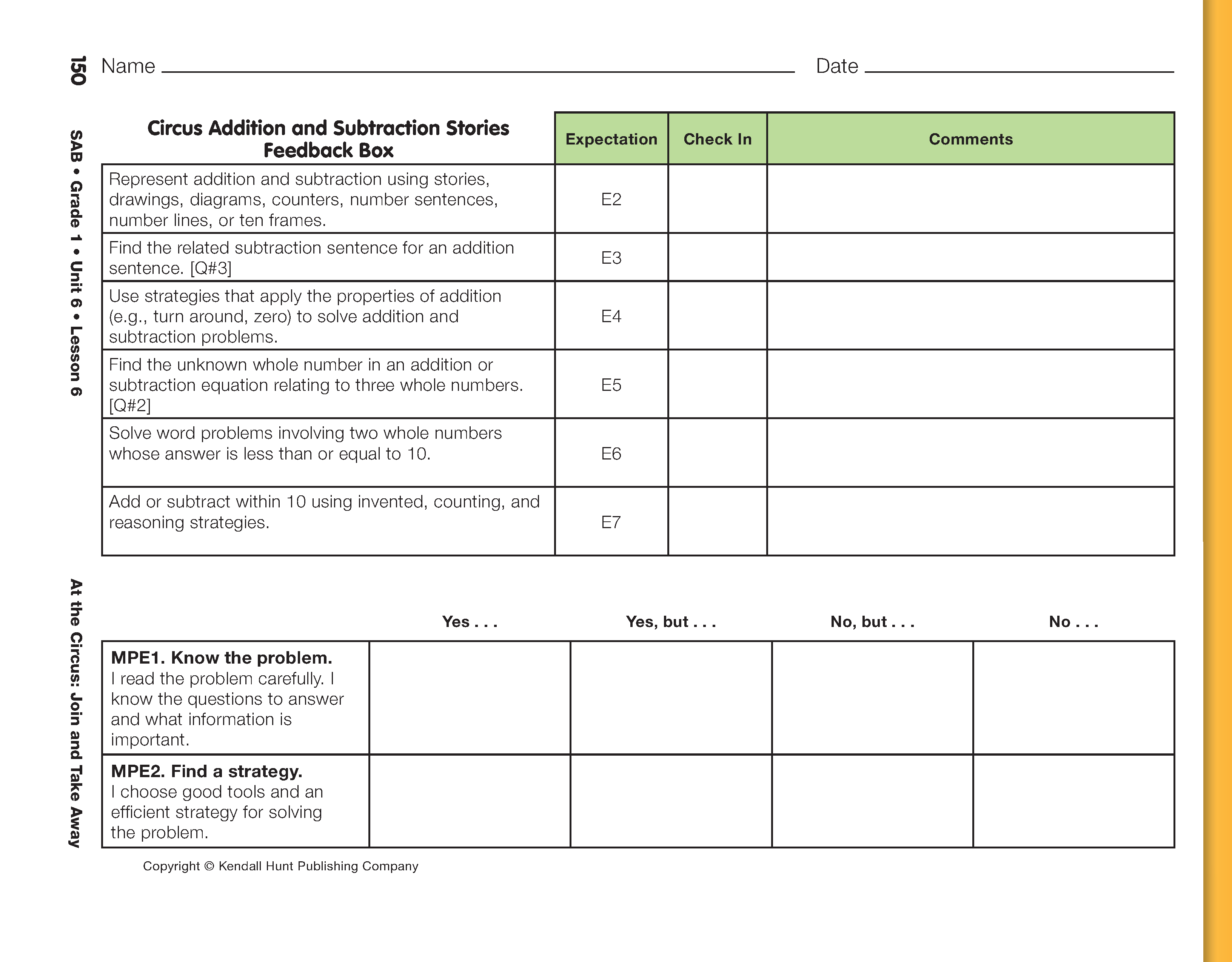At the Circus: Join and Take Away
Est. Class Sessions: 2Developing the Lesson
Part 2: Writing Addition and Subtraction Stories
Act Out Addition and Subtraction Stories. Ask students to act out various addition and subtraction situations. Begin by calling up a group of three students and have them perform an activity, such as sing a song, do jumping jacks, or twirl their arms. Next, call up a group of four more students and have them join the original group of three students to perform the same activity. Ask students to think of an addition sentence that describes what is happening and call on individual students to use connecting cubes and write number sentences on the display of the Part-Whole Diagram and Number Sentences Master.
Ask:
Ask a student to model the addition story with connecting cubes on the display of the Part-Whole Diagram and Number Sentences Master and then replace the cubes with numbers:
During the activity, ask the first group of three students to sit down while the others continue the activity.
Ask students to think of a subtraction story that describes what is happening and use connecting cubes on the part-whole diagram and write a number sentence:
Ask a student to model the subtraction story with connecting cubes on the display of the Part-Whole Diagram and Number Sentences Master.
Put students into groups of different sizes, ranging from three to ten students. Have them make up their own subtraction stories to act out for the class. After students act out their stories, select other students to fill in the display of the Part-Whole Diagram and Number Sentences Master to match the subtraction story. Draw attention to the part-whole and take-away or separate language students used to tell their number stories.
Write Addition and Subtraction Stories. Use the display of the Addition and Subtraction Stories pages Questions 1–2 to model how to write addition and subtraction stories, fill in the part-whole diagrams, and write the number sentences for one of the stories that the class acted out in groups.
Have student pairs make up their own addition and subtraction stories and draw pictures of them on the Addition and Subtraction Stories pages in the Student Activity Book. For each story, they draw a picture, fill in the part-whole diagram, and write a number sentence. Encourage students who finish early to write additional addition and subtraction stories on the other partner's page.
Assign the Circus Addition and Subtraction Stories page in the Student Activity Book.

















